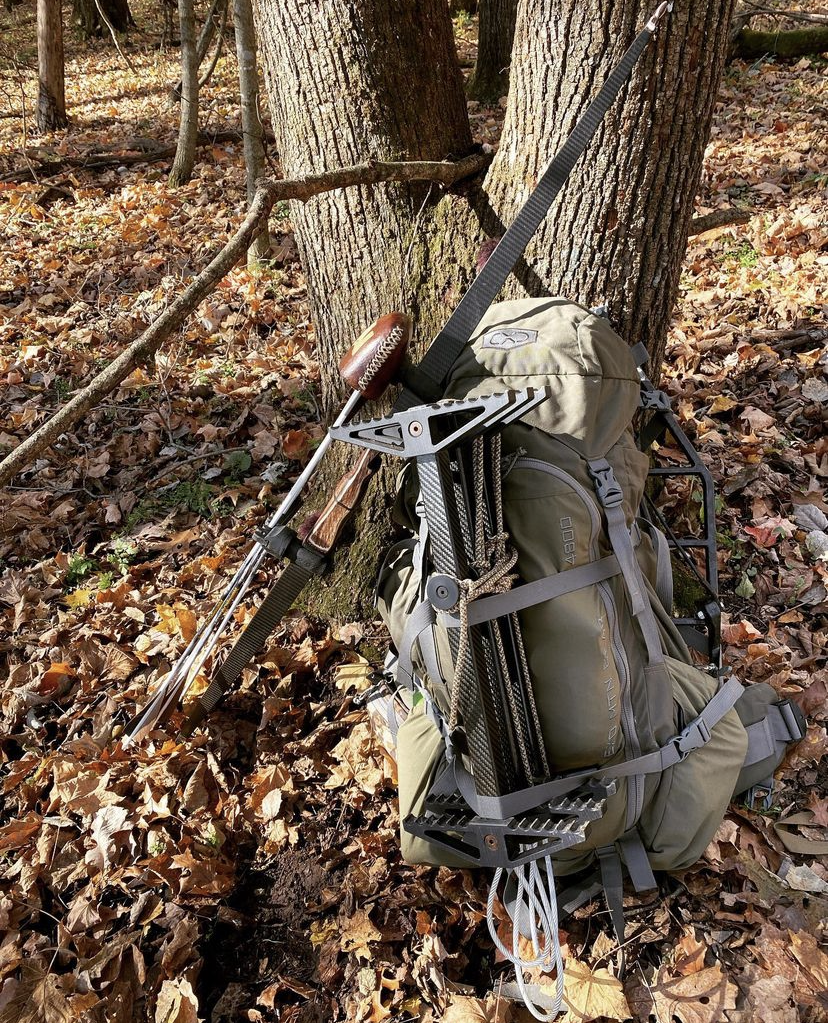
By: Jason Redd aka Duckmeat
Its summer and we're all thinking about our fall adventures, which is super exciting. I'm often asked about my training for mountain hunting, which to me seems like a fairly straight forward answer which is, go train in the mountains. This isn't so simple for some, due to geographical limitations, but don't let that be the crux to your prepartions. A little history, I didn't grow up in the mountains like a lot of people (now including myself) have the luxury. Its pretty simple to understand how to move in the mountains and get ready for them, if you live here. However, not all is lost if you live in Florida and are preparing for your "once in a lifetime" hunt out west. I know everyone wants to give their best when they take these special trips, so hopefully my unbiased suggestions will add some benefit to your preparation.
A little background, I grew up in the Mississippi Delta which is about as flat as a pancake, but outside of hunting I got involved in endurance sports which started with running my first 5K to impress a girl into becoming a competitive road bike racer and then an ultra trailrunner. These sports required me to race in mountainous regions of the country, so living in the Delta, training in the mountains wasn't a feasible option for my limited budget, so I had to improvise. This is where understanding the benefits of a strong cardovascular base with implemented pyramid training at higher anaerobic threshold became a key factor to getting my body prepared for going up hill for long periods of time. Now, I will not get too scientific and will keep this as elementary for anyone to understand.
1) Establishing a solid aerobic base
The key to establishing an aerobic base (moving while being able to talk in a normal voice that isn't labored) is building up your thereshold for going longer distances without going into anaerobic threshold (you're gasphing for air due to an elevated heart rate and lactic acid build in your muscles). Depending on your current state of fitness this can be just going on a hike for a few miles or it can be running 10 miles, but the key to building endurance is working longer distances at an easy heart rate and continuing to build on the distance through your training. I suggest doing this at least 3 days per week and continuing to increase the distance. Most of our hunts are based on hiking around at this level of heart heart rate with short to longer durations at an anaerboic state. As you get comfortable with higher miles, I suggest adding a weighted pack that is comparable to what you'd be carrying which is normally less than 35 lbs, but occassionally I will add up to 60lbs. (In theory you can pack upwards to 100lbs when getting a critter out, but I'm not a believer in training for that because no matter how much you prepare that amount of weight is just going to suck.) Adding the pack to the workout will get your body accustomed to the pack load which can be a shock to your hips, shoulders, and back. If you're more advanced and want to implement tools, such as a heart rate monitor there are a lot of sources on line for you to find your base lines for aerobic and anaerobic levels. I've included this one for an example https://www.polar.com/blog/running-heart-rate-zones-basics/
2) Working Anaerobic Capacity into training
This is where the Type 2 fun begins! Getting into this state of your heart rate takes a little work and is uncomfortable for longer durations. You can do this with hiking or an easy way is hill sprints or sprints on the track. For the easy version of understanding anaerobic capacity, you want to bring your heart rate to a zone where you can no longer talk while at this effort. If you're using a heart rate monitor, this would be Z4 and 5. The key to a healthy training plan is not doing this too much to where you become over trained. I suggest at least one to two days periodically. If you train in blocks of 4 weeks (which I suggest), then do the majority in week 3, so that you can do easier training on week 4 and allow your body to recover. These durations should last at segments of 2-4 minutes with equal recovery and be done in blocks starting with 2 efforts building to 4 or more. As mentioned these can be runs on a track, bleacher runs, or hill sprints, that increase through the duration of the effort. Since I live in the mountains, I will incorporate uphill hikes with a weighted pack, so that it mimics mountain hunting. After doing these you need to implement a solid cool down with stretching to allow the blood to circulate and blow out the lactic acid from your muscles. Also, drink plenty of fluids and have a recovery shake (if you're not also trying to loose weight because recovery shakes are calorie loaded which you need to be in a calorie defect for weght loss).
3) Weight Training
Weight training is an important factor for muscle balance of less used muscles. You don't have to look like a body builder to be strong in the mountains! In my opinion, the most important muscles for endurance in the mountains is a strong core because its the chassis that your body depends on for efficiency and becomes more imporatant as you become fatigued. However, it is also important to work your legs and back muscles. For the core, I like to include sit ups, crunches, or other core exercises into every workout day. Again, with these I do a lot of base work which is high reps with low or no weight, then I add some weighted exercises to increase strength. I do this at a 80/20 breakdown with 80% endurance with 20% strength. For the legs the breakdown is similar, but I do squats, deadllifts, box step ups, jump rope, box jumps, strides, etc. I also include pull ups, push ups, kettle bell swings, and other upper body weight exercises. The key to being fit in the mountains is having a balanced power to weight ratio which means you don't want to carry unnecessary body weight. Having huge upper body muscles aren't a strong benefactor when it comes to hiking mountains. I typically do weights at least 4 days a week which varies on intensity for what stage of my training I'm in.
4) Getting comfortable walking in different grades
Getting your feet prepared and body comfortable walking uphill, downhill, and on sidehills is an important part of mountain hunting. This is something that can be hard to do in areas without hills, but you can normally find some sort of hill or ditch bank to get yourself comfortable. In my opinion the most important is side hills. If you live in the mountains this is easy, but if you live in the low country then you will have to find a ditch bank or rail road mound. Walk these with a weighted pack for durations to get your ankes and feet comfortable with the awkward position. Having a well fitting pair of supported boots will help a lot from keeping your feet from becoming fatigued. I have a You Tube video that details my opinion on proper boot selection here https://www.youtube.com/watch?v=Vv1L4Jsuwo4
In summary getting as prepared as possible is the key, but I know from experience that time is a valuable commodity. Adding more than you were doing yesterday is the key. The more comfortable in the backcountry will keep you out longer and TIME in the field is the #1 key to success. The one thing I will contest to is that you will never "beat the mountain", so just enjoy the journey. The key is to have fun and have the adventure that you dreamed about. Thanks for taking the time to read this and if you have any questions, please feel free to reach out! Also, if you'd like for us to cover more training topics, shoot us a message with suggestions. #huntlikeaninja
Disclaimer: I'm not a personal trainer or a certified coach, my recommedations are fully based on my experience from years of endurance sports and being coached by certified endurance and strength coaches.




